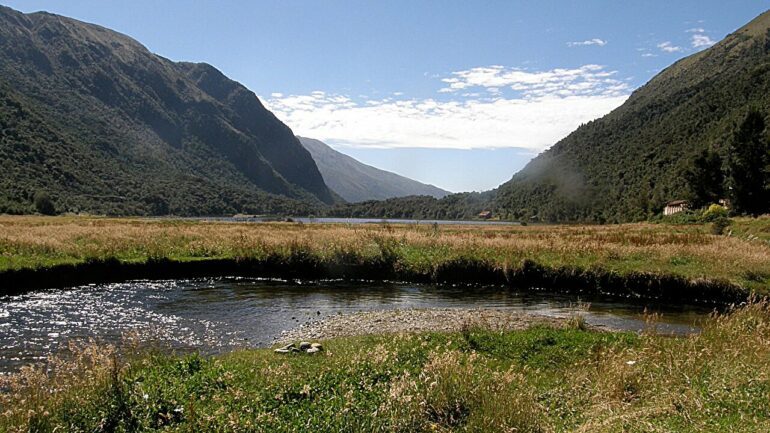A new study that explores ancient temperatures and rainfall patterns in the tropical Andes of South America has revealed how 16,000 years of climate history in this part of the world was driven by carbon dioxide levels and ocean currents from global climate events.
Led by Brown University researchers, the study marks the first high-resolution temperature record covering the past 16,000 years in the tropical Andes and could help scientists predict and mitigate future climate impacts in tropical regions of the planet. The work is described in the Proceedings of the National Academy of Science.
“Usually when we study climate change in the past, we emphasize the Northern Hemisphere or Southern Hemisphere because of the outsized role they play in affecting climates all over the globe,” said Boyang Zhao, a scientist in Brown’s Department of Earth, Environmental and Planetary Sciences and the study’s first author.
“One of the biggest questions we are getting at is what are the driving factors behind temperature history in this part of the tropics, so that we can begin to potentially apply that data and knowledge to other tropical regions.”
Along with future implications, the new study provides a unique look at the way distinct and distant parts of the world influence temperature and weather elsewhere, emphasizing how regional climates are connected to global climate changes.
“Our evidence here suggests that temperatures in this region of the world are more influenced by the Southern Hemisphere—so places like Antarctica,” Zhao said.
The study focused on an analysis of sediment samples from Laguna Llaviucu, a lake located in Ecuador’s Cajas National Park. The measurements from the sediment samples showed that temperature variations in the tropical Andes closely aligned with climate events that saw the planet’s temperatures rise and fall during the past 16,000 years.
Overall, the evidence showed that the main driver in these temperature fluctuations was the concentration of CO2. Researchers saw evidence that the tropical Andean temperatures track with Antarctic temperatures, which are mainly controlled by carbon dioxide concentrations. The findings showed that about 17,000 to 14,000 years ago, tropical Andean temperatures rose when carbon dioxide increased, and that the temperatures remained relatively stable about 12,000 years ago when carbon dioxide levels remained relatively stable.
Zhao said that the findings support previous research identifying carbon dioxide as a key driver of global temperature changes since the last Ice Age.
The study also highlighted the role of ocean currents that move warm water from the tropics to the North Atlantic. During a cooling period known as the Antarctic Cold Reversal 14,500 years ago, the northward current was strengthened, causing it to transport more heat northward and cool sea surface temperatures in the south. The researchers found that this cooling effect extended to the tropical Andes.
To reconstruct past climate conditions, the researchers analyzed lipid biomarkers and hydrogen isotopes collected in 2009 from Laguna Llaviucu by scientist Mark Bush from the Florida Institute of Technology. Lipid biomarkers are chemical compounds that provide clues about past temperatures and rainfall patterns. The high-resolution data, combined with accurate dating techniques, allowed the team to create a detailed timeline of climate changes over the past 16,000 years.
According to the researchers, this is the first time organic biomarkers have been used to put together a quantitative climate history for tropical South America. It is traditionally difficult to reconstruct temperatures from the tropics.
The study also points out a number of regional differences in temperature patterns, like how the tropical Andes and Southeast Asia cooled during certain historical periods while other regions like Africa did not. The research also shows how local factors may help to counteract the global effects of rising CO2 levels by looking at differences between past temperature models and what the sediment data show.
The researchers from Brown plan to continue to explore past temperature patterns in this part of the world that historically lacks complete climate records.
“Mountain environments are some of the most sensitive regions on Earth to climate change,” said James Russell, a professor of Earth, environmental, and planetary sciences at Brown who oversaw the new research. “In fact, in the near future, high tropical mountains, such as the Andes, are predicted to experience a rate of warming second only to the Arctic, which is the fastest warming part of the planet.”
Along with Zhao and Russell, authors from Brown also included undergraduate student Aaron Freeman.
More information:
Boyang Zhao et al, Tropical Andean climate variations since the last deglaciation, Proceedings of the National Academy of Sciences (2024). DOI: 10.1073/pnas.2320143121
Citation:
New study unveils 16,000 years of climate history in the tropical Andes (2024, August 12)



